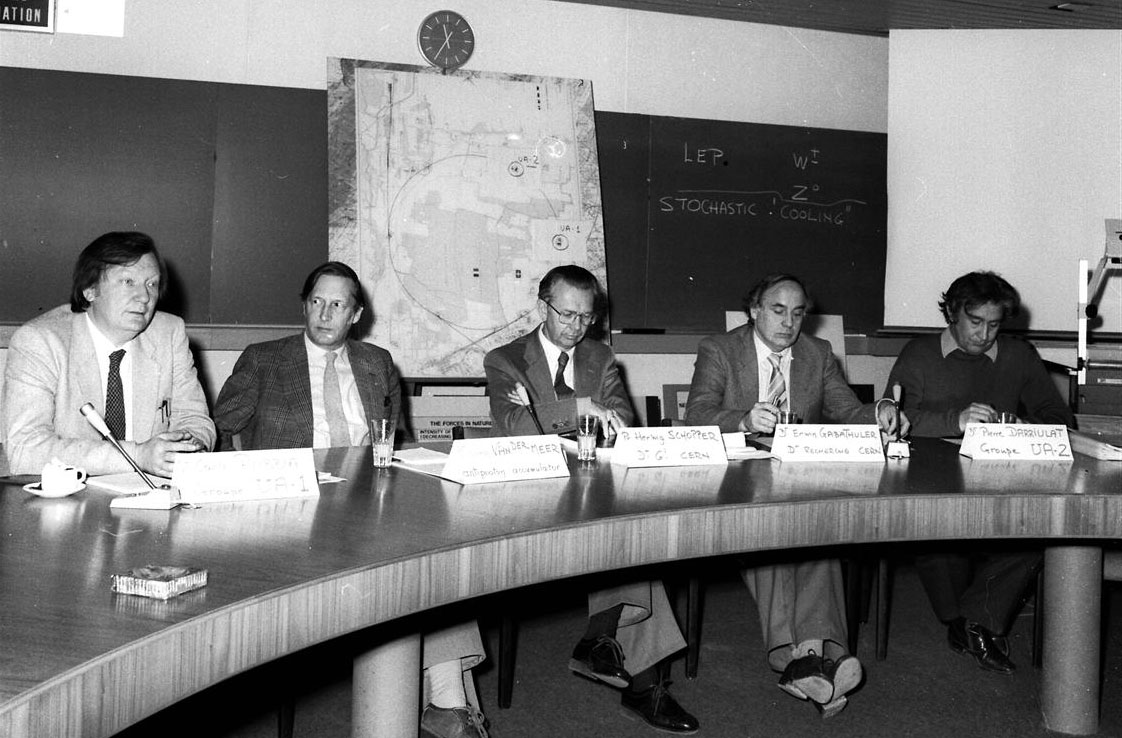The W boson is a fundamental particle. Together with the Z boson, it is responsible for the weak force, one of four fundamental forces that govern the behaviour of matter in our universe. Particles of matter can interact by exchanging these bosons, but only over short distances.
With a charge of +1 or -1, the W boson can change the identity of particles. It is responsible for many nuclear processes, including those letting stars burn. This burning also creates heavier elements and, when a star dies, those elements are tossed into space as the building blocks for planets and people.
CERN announced the discovery of the W boson on 25 January 1983. Two collaborations, UA1, led by Carlo Rubbia, and UA2 led by Pierre Darriulat, presented their observation in seminars a few days earlier. The discovery was due to an idea that Rubbia and others had presented: converting the SPS into a proton anti-proton collider with the necessary energy to produce the W boson. This conversion was made possible by Simon van der Meer’s invention of stochastic cooling. As a result, Rubbia and van der Meer received the Nobel prize in physics in 1984.
The W boson is the fourth heaviest particle in the Standard Model and its mass is reliant on the Brout-Englert-Higgs mechanism. This mechanism called for the existence of a Higgs boson, which was discovered at CERN in 2012.
Since the 1983 discovery, experimental physicists have continued to compare measurements of W boson properties with theoretical predictions. Studies at the LHC now build on those at its predecessor, LEP, probing properties, particularly the mass, with increasingly higher precision. Any deviation from theory could hint towards yet unknown physics.


